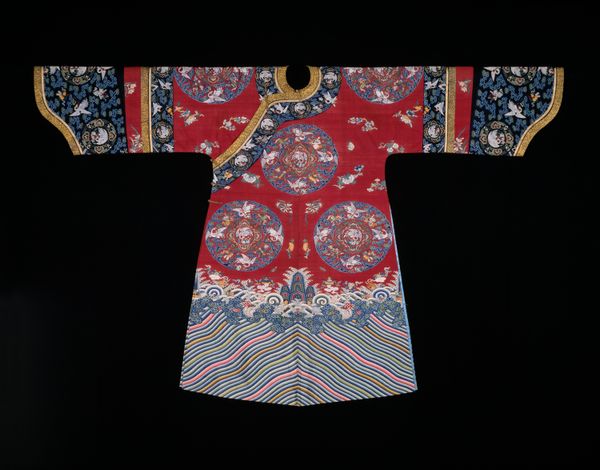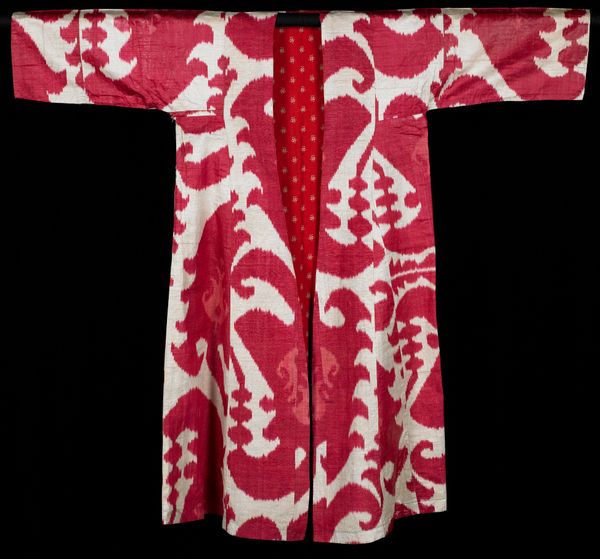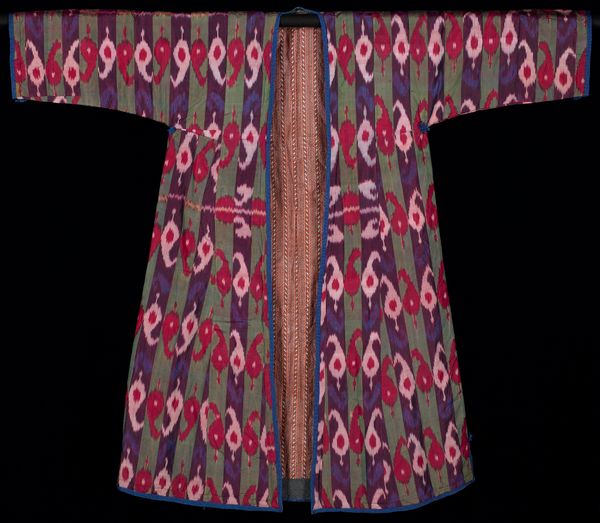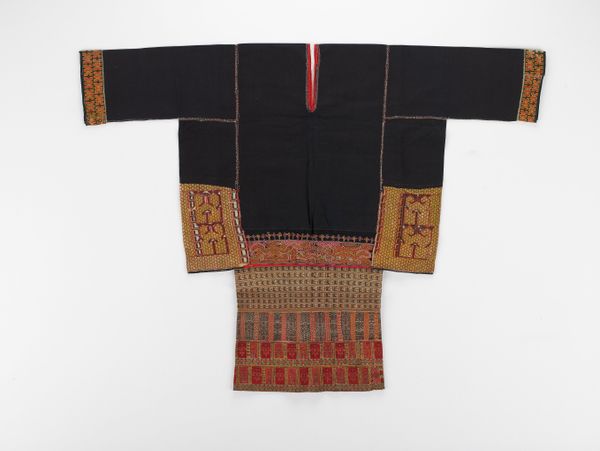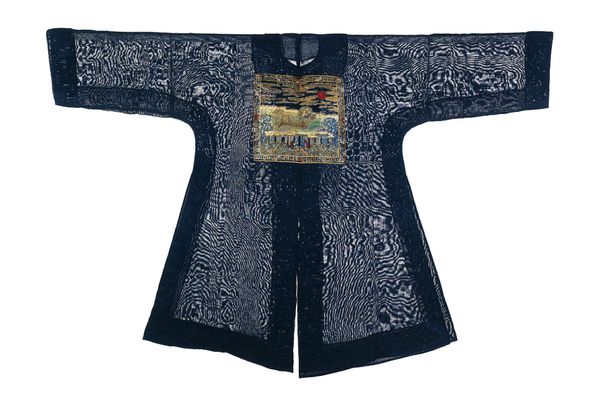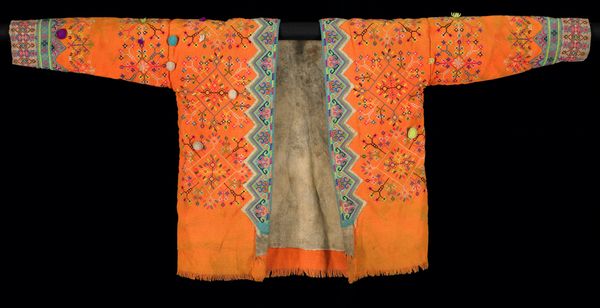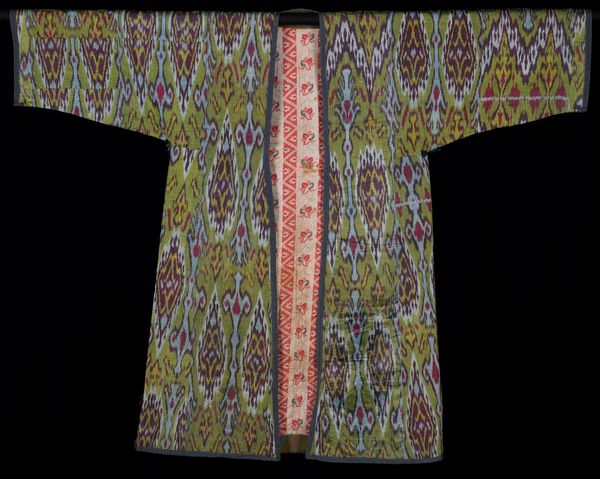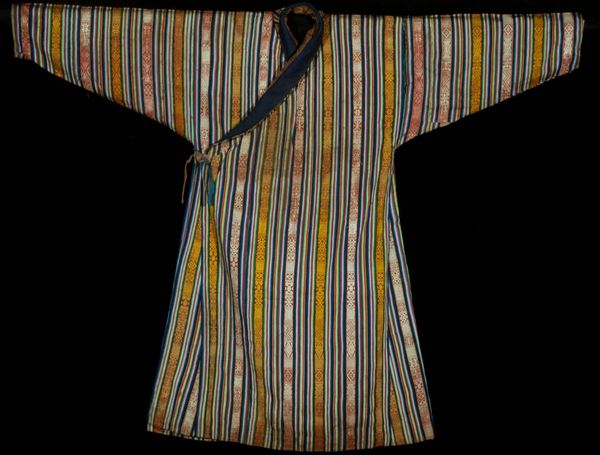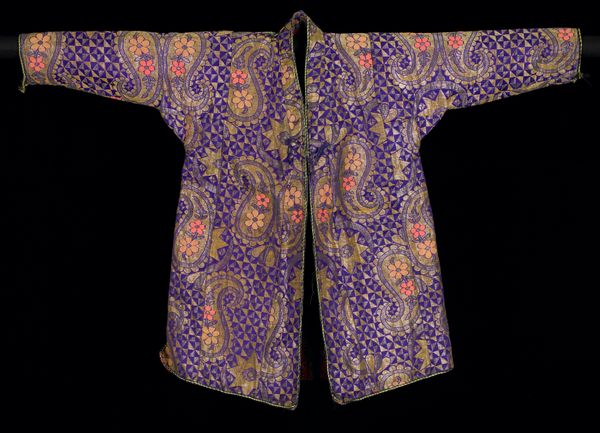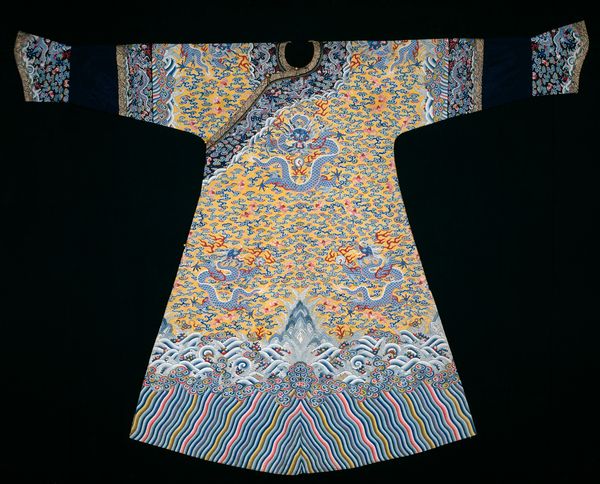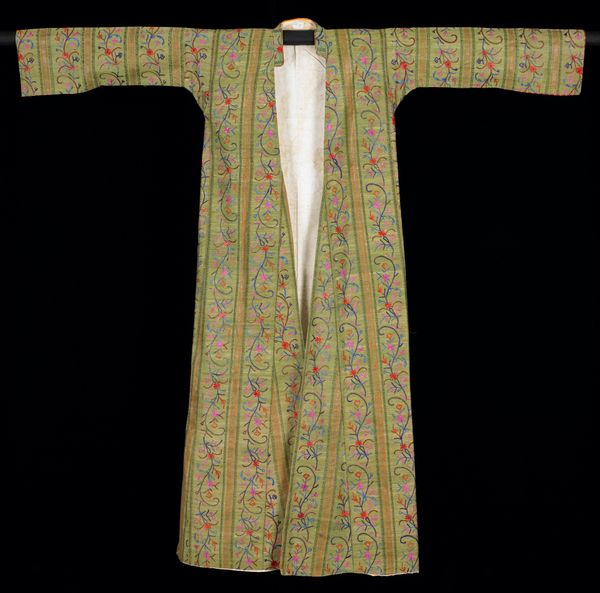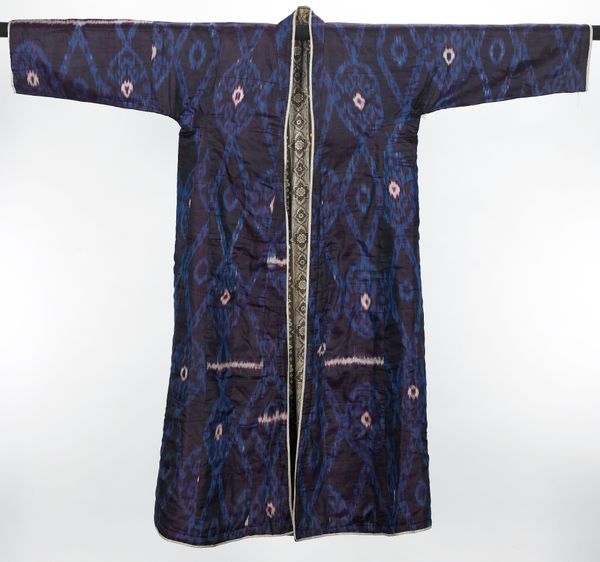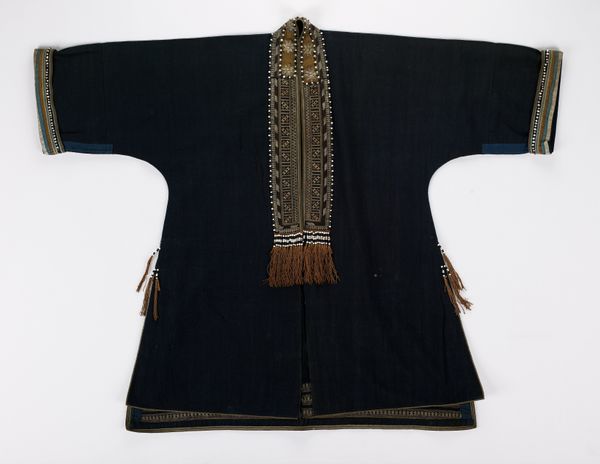
silk, textile
#
silk
#
pattern
#
asian-art
#
textile
Dimensions: 51 5/8 x 63 1/4 in. (131.13 x 160.66 cm)
Copyright: Public Domain
Editor: Here we have an Anonymous, 19th-century silk coat from Asia, held at the Minneapolis Institute of Art. I’m immediately drawn to the striking green and black patterns. It has a bold, almost jagged, energy about it. How would you interpret a piece like this from a historical context? Curator: Well, looking at textiles like this, particularly from a time when global trade was expanding, raises important questions about cultural exchange and power dynamics. Consider the Silk Road; how does the garment reflect or resist the influence of global markets? Is it speaking to trade, power, or something else? Editor: I see what you mean! The silk definitely hints at trade, but the unique pattern makes me wonder if it could be tied to status, or local cultural expression? Curator: Exactly. Often, these seemingly simple items carried heavy socio-political weight. A pattern could signify a family, clan, or region. Moreover, textiles in museums often present a fragmented story, removed from their original wearers and context. Does its presence in a Western museum say anything about the history of collecting practices? Editor: That's fascinating. I hadn’t considered the role of the museum itself. Does seeing it this way change how we understand its original meaning? Curator: It absolutely does. The museum bestows a new kind of value, turning a functional garment into an object of art and historical inquiry, influencing our appreciation. It's a dialogue across time, cultures, and institutions. Editor: It gives me so much to think about. It really shows that there’s more than meets the eye when we think about art history and society. Curator: Absolutely, it’s never just about aesthetics, but power, and a variety of different levels of cultural interchange as well.
Comments
No comments
Be the first to comment and join the conversation on the ultimate creative platform.
